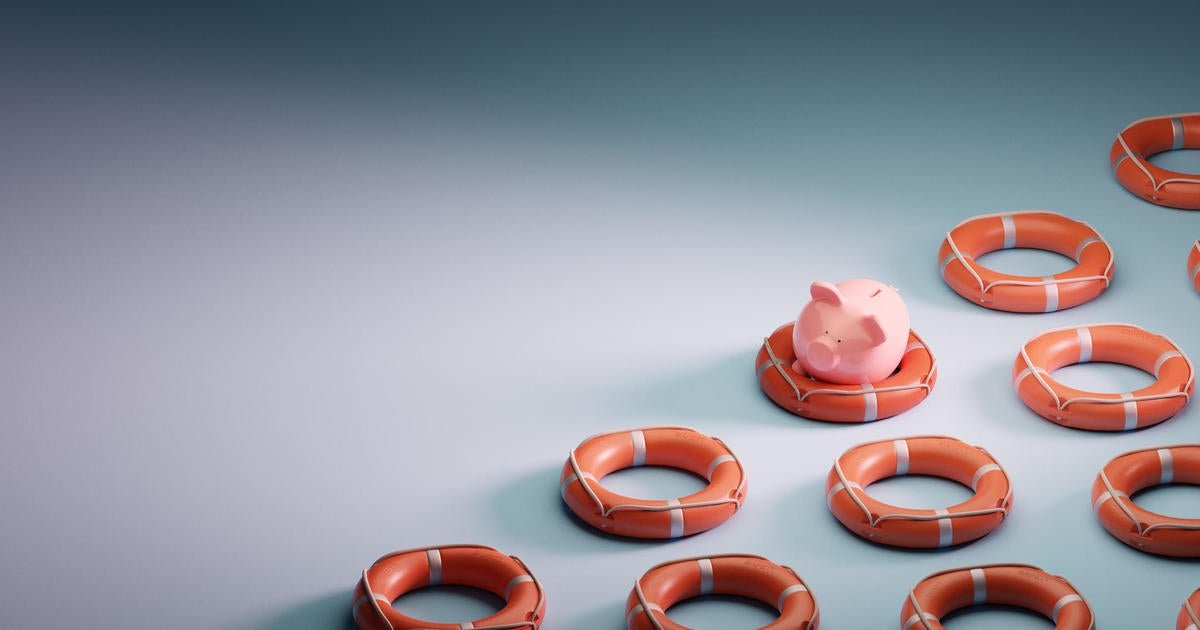Getty Images
Filing for bankruptcy can be a daunting decision and is often viewed as a last resort for those struggling under the weight of unmanageable debt — but hundreds of thousands of Americans still file for this type of relief each year. In 2024, annual bankruptcy filings totaled 504,112, according to the Administrative Office of the U.S. Courts, marking an increase of over 16% compared to the year prior. Studies have also found that a significant percentage of those who filed for bankruptcy had unpaid medical bills or other debts in collections, highlighting how pervasive the issue of collections debt has become.
Collections debt refers to unpaid obligations that creditors have sent to third-party collection agencies. Having debt in collections is a serious issue, as it not only damages your credit score but also subjects you to persistent calls and letters from debt collectors — and in some cases, the repercussions can be even more serious, ranging from lawsuits to wage garnishments. Given the potential ramifications, the mental and emotional toll that comes with dealing with collection efforts can be as burdensome as the financial implications.
That’s where filing for bankruptcy comes in. Bankruptcy can offer a potential solution to overwhelming amounts of debt, but will your collections debt actually go away if you file? Or should you consider the alternative debt relief options available to you instead? That’s what we’ll explore below.
See what debt relief strategies are available to you now.
Will collections debt go away if you file for bankruptcy?
The short answer is yes, most collections debt can be eliminated through bankruptcy, but the type of bankruptcy you file determines exactly how this works. The two most common types are Chapter 7 and Chapter 13 bankruptcy, and how your debts are discharged differs between the two.
Under Chapter 7 bankruptcy, often called “liquidation bankruptcy,” most collections debt is discharged completely. This includes credit card debt, medical bills, personal loans and utility bills in collections. However, certain types of collections debt cannot be discharged through bankruptcy. These typically include:
- Most student loan debt (federal or private)
- Recent tax debt (generally less than three years old)
- Child support or alimony obligations
- Court-ordered restitution for criminal cases
- Debts obtained through fraud
Chapter 13 bankruptcy, known as “reorganization bankruptcy,” handles collections debt differently. Rather than an immediate discharge, you enter a three- to five-year repayment plan. During this time, you make monthly payments to a trustee who distributes the money to your creditors according to a court-approved plan. After completing the plan, the remaining eligible debts are discharged.
Speak with a debt relief expert about your options today.
Other debt relief options worth considering
Before deciding on bankruptcy, it’s typically worth exploring your alternative debt relief strategies — especially considering the long-term credit damage that comes with filing for bankruptcy. The following options may be less disruptive to your financial standing and could help you avoid the long-term consequences of bankruptcy:
Debt consolidation
By combining multiple debts into a single loan with a lower interest rate, you can potentially reduce monthly payments and simplify the debt management process. This can be done with a traditional debt consolidation loan or a debt consolidation program, which is offered by some debt relief agencies.
Debt settlement
By working with a debt relief company or directly with creditors, it may be possible to negotiate to pay less than what you owe. Settlements typically lower your original balance by 30% to 50%, so this option could significantly impact your credit score and may have tax implications.
Credit counseling
Credit counseling agencies can help you create a debt management plan that works with your budget while potentially securing lower interest rates and waived fees on your debt. Debt management plans typically involve a structured repayment schedule over several years.
How to decide on the right debt relief strategy
If you’re unsure which approach would work best for your situation, it may help to evaluate these factors:
- Total debt amount: Bankruptcy might make more sense for larger debt loads, particularly if it would take more than five years to repay through other means. Calculate your debt-to-income ratio; if it exceeds 50%, bankruptcy could be worth exploring.
- Types of debt: Since not all debts are dischargeable in bankruptcy, analyze your debt composition. If most of your debt consists of credit cards, medical bills or other unsecured debt, bankruptcy could provide significant relief.
- Income stability: Chapter 7 bankruptcy requires passing a means test, while Chapter 13 needs reliable income for the repayment plan. Recent job loss or income reduction might influence which options are viable.
- Asset protection: Chapter 7 bankruptcy might require liquidating non-exempt assets. If you own significant assets, Chapter 13 or alternative debt relief methods could better protect your property.
The bottom line
Filing for bankruptcy can eliminate many types of collections debt, but it’s not a one-size-fits-all solution. Understanding the nuances of Chapter 7 and Chapter 13 bankruptcy is crucial for determining whether this path is right for you, and exploring your alternative debt relief options can also help you make an informed decision.




